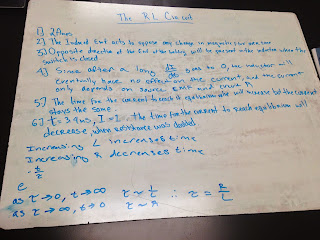 |
| The two photos above summarize some of the key characteristics of an induced emf in a conducting loop. |
 |
| These are various relationships between several elements in a circuit with an inductor (L) and a capacitor (C) |
 |
| As current initially starts flowing in a circuit with an inductor, it takes time for the current to build up to its maximum magnitude, eventually leveling off as time goes on. |






No comments:
Post a Comment